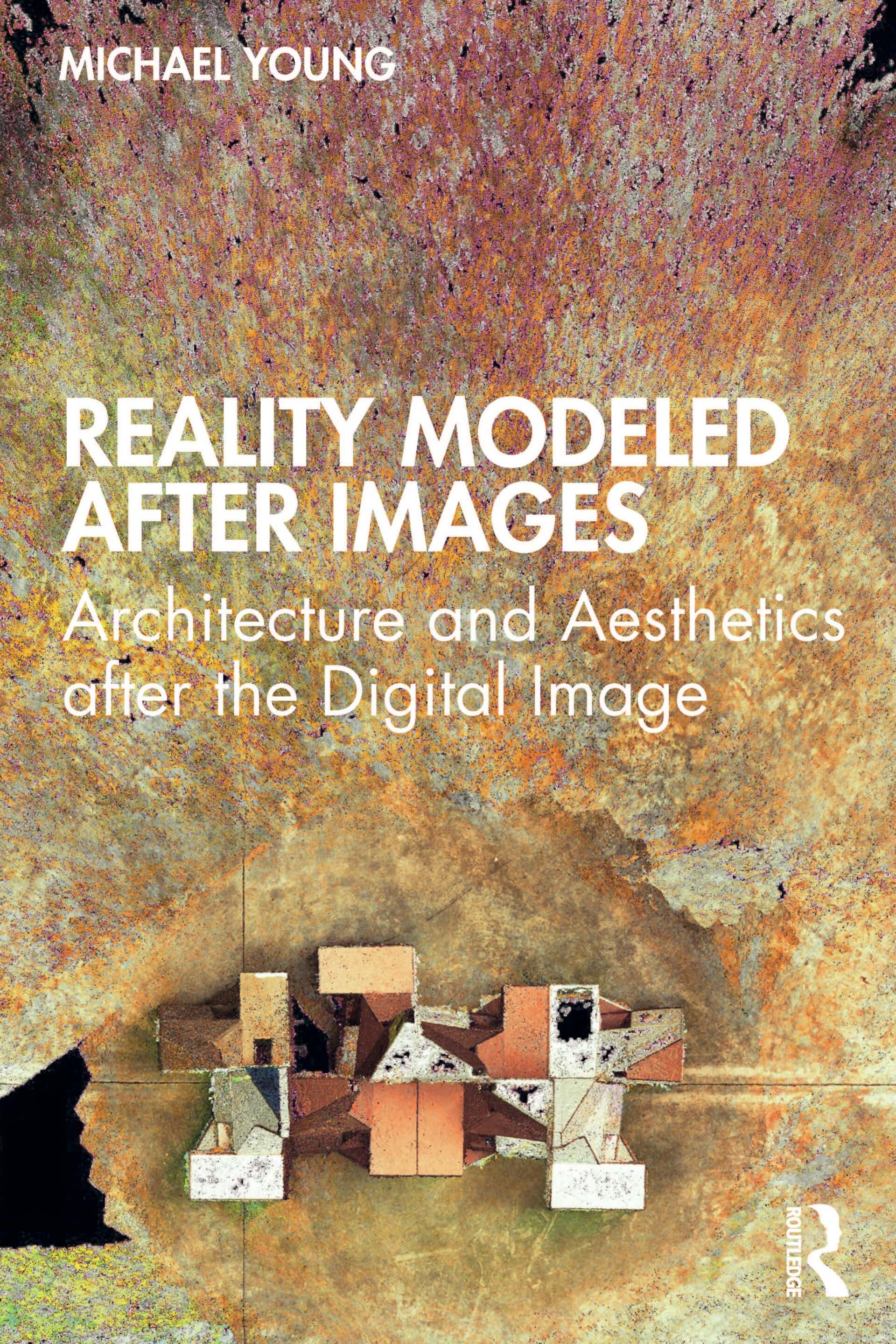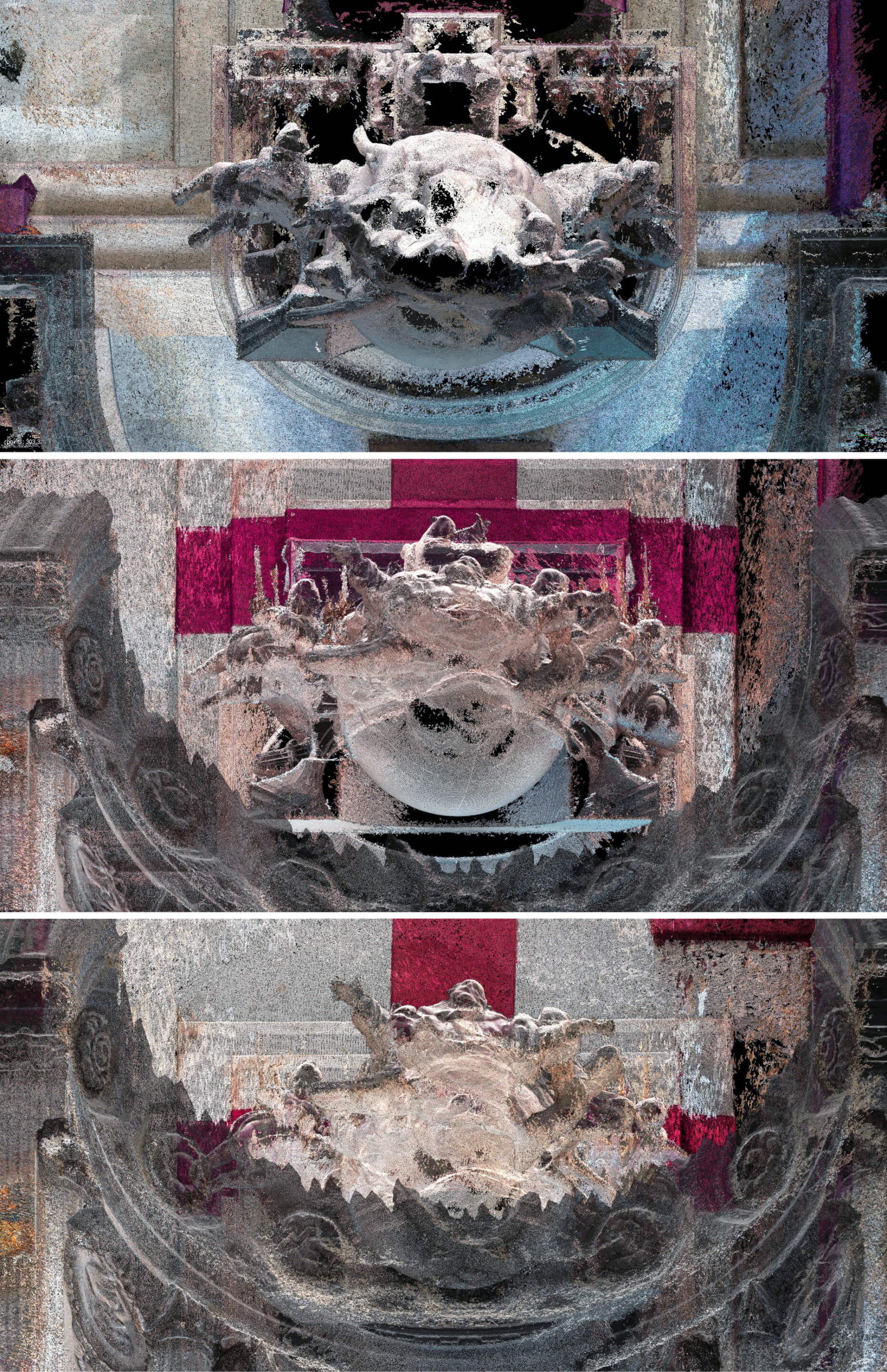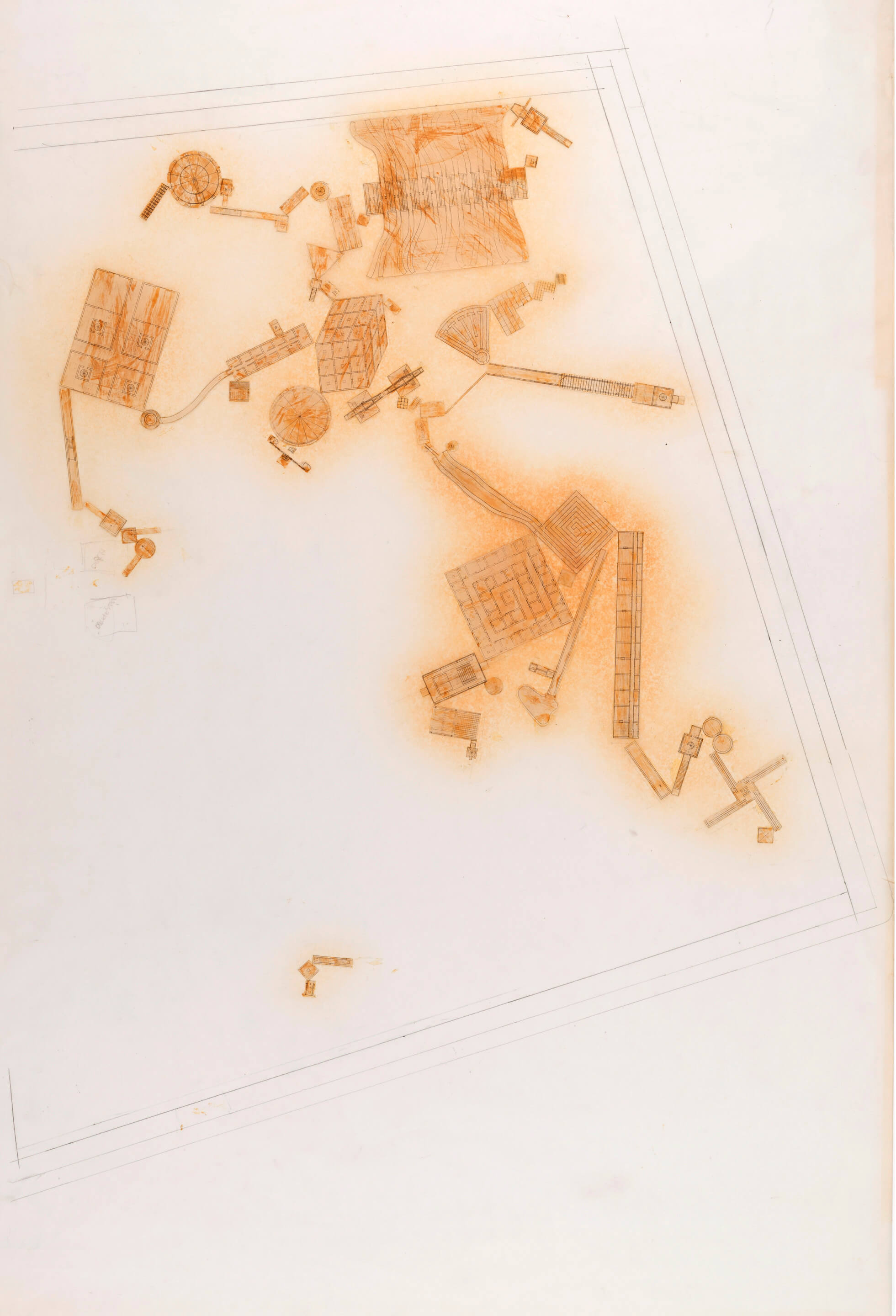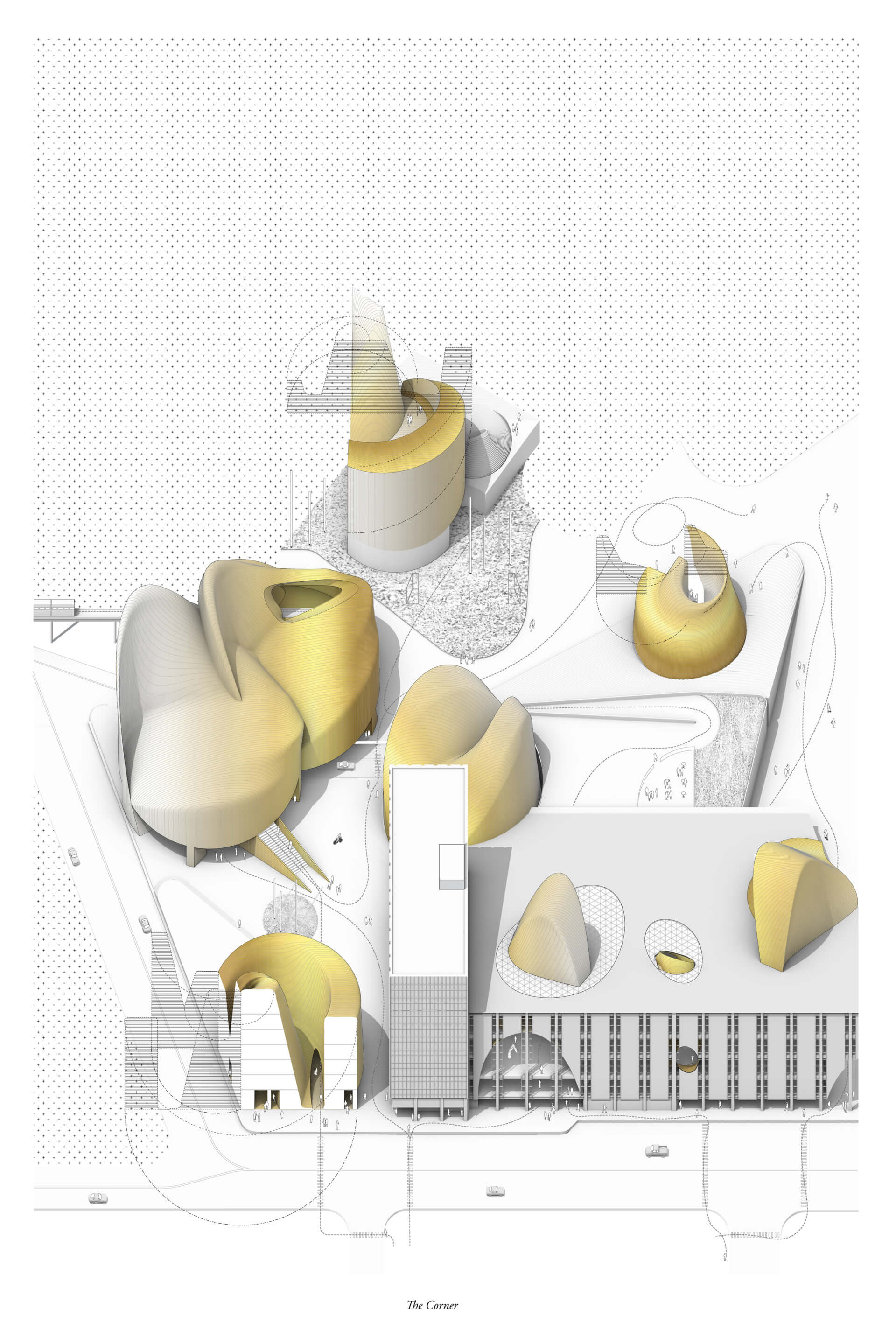A new book on architectural representation, Reality Modeled After Images: Architecture and Aesthetics after the Digital Image (Routledge Publishing) by Michael Young, co-founder of YOUNG & AYATA and assistant professor at The Irwin S. Chanin School of Architecture at the Cooper Union, attempts to deal with the state of contemporary image culture by cutting across history, design, art, technology, and aesthetic philosophy.
Covering a broad range of topics—including politics, labor, machine vision and surveillance capitalism, lidar and photogrammetry, and ornament, among many others—without feeling disjointed, Reality Modeled After Images is organized around three central themes that come out of the École des Beaux-Arts: pochė, entourage, and mosaȉque. The pochė, or the spaces hidden from view by architectural representation; the entourage, or all the extra, “non-architectural” elements that populate architectural plans and drawings such as plantings or scale figures, and the mosaȉque. All involve the rendering of surfaces, all had less to do with any one particular design solution or strategy, historically, and more to do with the classical, disciplinary methods of representing those designs, much of which has persisted to today, as Young lays out.

While these themes serve as an effective structural and thematic device that binds the book together, it reads like a series of longer, separate essays that could stand on their own, if they wanted, but still manage to mesh well within a larger whole. It is closer to a highly curated journal with a consistent voice than a traditional book, with only six chapters—two for each theme—yet never feels too brief nor stretched thin.
The book is organized around classical themes and analyzes both historical and contemporary works of architecture but Young makes no claims that Reality Modeled After Images is a scholarly work of architectural history; rather, it is a theoretical proposition about representation and the construction (and challenging) of disciplinary conventions. When I asked Young what he was thinking or working on that culminated in the ideas canonized in the book, he replied, “Somewhere about a decade ago, I came upon the problem that we weren’t dealing very well with theorizing or talking about the ways in which architects use images.” Owing a debt to John May’s 2017 essay in Log 40, “Everything is Already an Image” and subsequent book, Signal. Image. Architecture, Young was skeptical of the “false dichotomy” that pervaded architectural circles between “drawings” (controlled, measured, and disciplinary) and “images” (seductive, suspicious, and extra-disciplinary).
But while what we used to call a “drawing” would now more correctly be categorized as an image, this new technology does not render obsolete disciplinary conventions; in fact, these conventions persist and mutate around newer technologies in a way that pushes back on the technology itself. In thinking about the ways architectural images are created today (as opposed to “content” or architectural design itself), Young actually turned to history while in residency for the 2019-2020 Rome Prize. “It was really in Rome where a lot of these things started to click into place, with these three terms from the École des Beaux-Arts: the pochė, the entourage, and the mosaȉque.”
To be clear, Young isn’t making an argument for classical representational techniques as contemporary practice; far from it. Instead, he has laid out a framework for potential new readings of both historical and contemporary architectural content through the lens of concepts typically resigned to stylistic applique. For example, one of the better examples in the book is the reading of the trend of the non-compositional plan (Sou Fujimoto’s Residential Treatment Center for Emotionally Disturbed Children; Herzog & de Meuron’s First Scheme for the Parrish Art Museum; Young Project’s Six Square House) as entourage, rendered similar to how plantings were placed historically.

When asked if the thesis of the book was that architecture today could be understood as representation itself, Young said, “The image itself has an ontology. The images we have project a reality that becomes a desire for the ways in which the world can be other than we assume it be—and that is as real as the physicality of material construction.” While it doesn’t absolve architects of the need to actually build things—Young was clear this wasn’t an argument for sci-fi architecture—it does mean that the images architects make are very much real, in the world, and an important medium of our work. This is particularly relevant in a world where so much of architecture is consumed via image, whether through print or digital publication, social media, or otherwise. “We need to treat it not as a degraded form of architecture but as a form of architecture.”
A contemporary reading of pochė considers how the traditional role of “service space” and hidden cavities fundamentally existed to reveal labor, both human and nonhuman. While partitions and interstitial spaces have tended to be much thinner since modernism and the nature of pochė has shifted, Young pointed out that we’re not that far removed from “the help” who were kept out of sight: “The division of social class within architectural organization may feel of a different age tied to extreme privilege, but the corridors that conceal the circulation of people are the predecessors to the shafts that allow the mechanical systems of air, gas, electricity, and water to circulate, servicing without disrupting the primary spaces of inhabitation.” Although our plans still have partition thicknesses, mechanical shafts, and back-of-house spaces, a broader understanding of pochė concerns itself with what is revealed and what is hidden not just in our plans and sections, but in other forms of architectural imaging: photogrammetry and lidar. Lidar scans produce hidden pockets of “unseen” or unsensed space which makes no distinction between the core and shell architecture and the furniture and objects that inhabit the space (entourage, to stay on theme). “[W]hat is actually registered here is all the informal undesigned irregularities of life as lived,” Young said to describe lidar pochė.

The mosaȉque in a technological age can be seen in uncanny mashups of “content” and “style” by GANs (Generative Adversarial Networks) and CNNs (Convolutional Neural Networks) in the production of deepfakes. This work has been undertaken by various contemporary architects, including Ruy Klein, LAMAS, A/P Practice, and M. Casey Rehm. Deepfakes are a particularly scary and loaded subject because of their potential political abuses in an era of misinformation, but what qualifies as “misinformation” and what is simply a speculative “new real”? From Chapter 5:
These artists and architects manipulate photoreal images and use CNNs to create almost seamless images, challenging assumptions about what is real, what is artifice, and what is manipulated.… The ‘final’ image seems to simply present a reality—a “deep fake”—without signaling to the viewer if the project is to be read as a critique or a seduction. And this deadpan affect is its power—it is just a new real—blunt and decorated.
Skeptical of this, Young and I discussed if this was actually a desired characteristic given the current polarization of basic reality. After discussing issues of worldview, belief, and doubt, he said, “The best art trains you in doubt, because it introduces things to the artwork that makes you doubt what you are looking at. Thus, by initiating the position of doubt in your mind, you begin to evaluate when and where and in what ways you believe in things.” We all could certainly use a little more doubt and humility regarding our outlook on the world; it remains to be seen if those we, as a society, really need to lean into those doubts would actually do so.
Fundamental to Young’s argument throughout the book is the primacy of aesthetics. Following Graham Harman’s idea of “aesthetics as first philosophy,” or that all philosophy and theory must begin with aesthetics as the way we all sense and mediate reality, the influence of philosopher Jacques Rancière and his “distribution of the sensible” is also present throughout. Rancière was famously skeptical of traditional post-Marx leftist politics that singularly emphasized critique; instead, Rancière argued that a true political strategy must be aesthetic and projective by nature. That is, “the dominated do not remain in subordination because they misunderstand the existing state of affairs but because they lack confidence in their capacity to transform it.”
Young argues that, as architects, “it’s almost an ethical obligation to take aesthetics extremely seriously.” He’s clear that he’s speaking specifically about the role of the architect and their design labor, not their duty as citizens:
As politically engaged citizens, we have every necessity to question, protest, reject all the things we find to be affronts…to the society we share. But that is different than trying to act through architecture and how architecture can be engaged in those politics.

Our critique of exploitation in society, or even within architecture itself, doesn’t give us a free pass not to design things. When it comes to designing things, aesthetics come first. We need to “project and speculate, imagine and intervene” possible futures. And this is most effectively done both by using and challenging conventional modes of representation and the creation of the architectural image. As the introduction to the book states, “the conventions that architecture places so much value on as important for maintaining disciplinary expertise are not and have never been as stable as they are believed to be.”
Ultimately, Young is a believer in, and arguer for, the discipline of architecture. Norms and conventions are used by institutions to assert expertise, and ultimately, power and dominance; a representational regime of architecture is one such avenue. But for Young, this is how architects can engage power and politics, and by understanding the conventions that institutions use to establish that power and dominance through things like representation, those conventions can be challenged, twisted, inverted, or subverted and the collective meaning and value can be reassessed. While Young holds no naivete that a non-compositional or non-hierarchical plan—such as Louis Kahn’s The Dominican Motherhouse of St. Catherine de Ricci, James Stirling, Michael Wilford, and Associates’ Plan for Wissenschaftszentrum, or BairBalliet’s The Corner in The Next Port of Call—can somehow reorder the exploitative practices of private land ownership, it introduces doubt or resistance towards values like hierarchy, symmetry, or that order can support traditional distributions of power and towards disruption, democracy, or a flatter ontology, for example. It is indirect, abstract, and perhaps more realistic than idealistic or utopic, but important nonetheless.
Aesthetics do carry cultural values, and representation strategies, such as the pochė, entourage, and mosaȉque, can challenge the status quo, in their small ways. In our contemporary moment of image inundation and political and social turmoil, Reality Modeled After Images couldn’t have come at a better time.
AN uses affiliate links; if you purchase something through such a link, AN may receive a commission.











